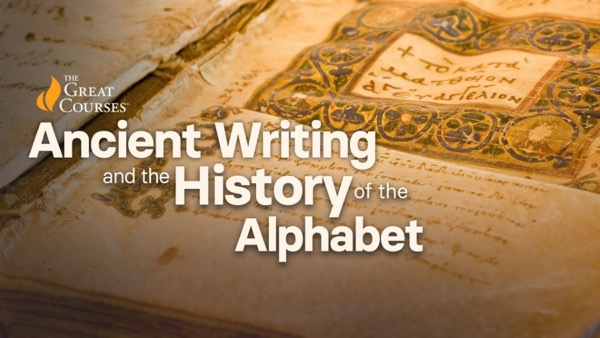John McWhorter – Ancient Writing and the History of the Alphabet
Description
John McWhorter – Ancient Writing and the History of the Alphabet

Course Overview
The ubiquity of the written word in our everyday lives can make it easy to forget how recent the development of writing and literacy are in the span of human history. But writing is, in fact, a very recent phenomenon if we take a step back and look at the big picture of human development. Even if we simply limit our view to the existence of language, writing still occupies a small segment of time. Writing in its earliest forms, particularly, is very different than what we are familiar with today.
So, when—and where—did writing first emerge? Why did early humans find it necessary to record their thoughts in a visual medium? How did cultures that had relied solely on spoken language for thousands of years create symbols that could carry meaning? And how did all the many scripts and systems that developed over the centuries lead us to the 26-letter alphabet of the English language?
Embark on a journey to the very beginning of writing as a tool of language and see how the many threads of history and linguistics came together to create the alphabet that forms the foundation of English writing. Your guide is Professor John McWhorter of Columbia University and in the 16 lectures of Ancient Writing and the History of the Alphabet, he will help you navigate the complex linguistic and cultural history behind one of our most crucial tools of communication. With his trademark humor and conversational style, Professor McWhorter makes this larger-than-life history as entertaining as it is enlightening.
The Birth of Writing
If humans lived for tens and perhaps hundreds of thousands of years as a species with spoken language yet without writing, why was writing developed? We may speak about writing and literacy in lofty terms today—while simultaneously taking it for granted—but the truth is the earliest writing systems came about for limited uses that would gradually expand over time. The earliest known form of writing, cuneiform, began as a simple way to keep accounts, before it developed into a more abstract system of symbols that represented sound. Egyptian hieroglyphics likely took their inspiration from Mesopotamian cuneiform and were a hybrid of pictograms (symbols directly representing tangible things) and phonetic complements (symbols that represented sounds).
These early systems show the progression of writing from directly representative to a more abstract form that used symbols for sounds rather than objects or ideas, though neither ever progressed to a full alphabet-based system. Hieroglyphics did, however, likely influence the creation of the earliest known alphabet, which would in turn greatly shape the way languages like Aramaic and Greek would build their writing systems and influence languages around the world.
As Professor McWhorter shows you the development and evolution of writing systems, you will go on a sojourn across continents and through time to see how many seemingly unrelated languages share elements that can be easy to miss. With this foundation in place, you will be ready to embark on a fascinating journey through the creation of the English-language alphabet and see how the many threads of writing development can converge in unexpected ways.
